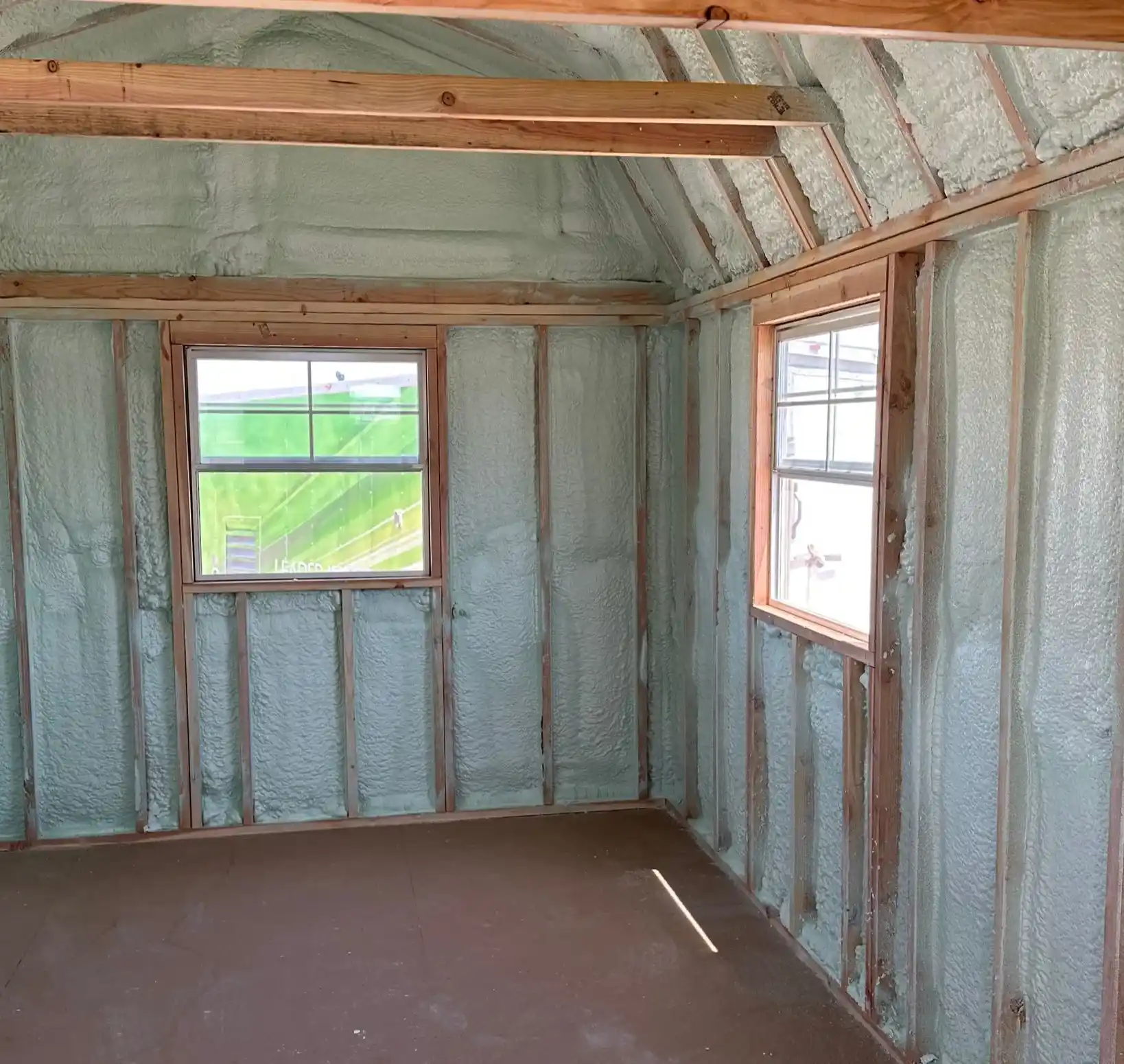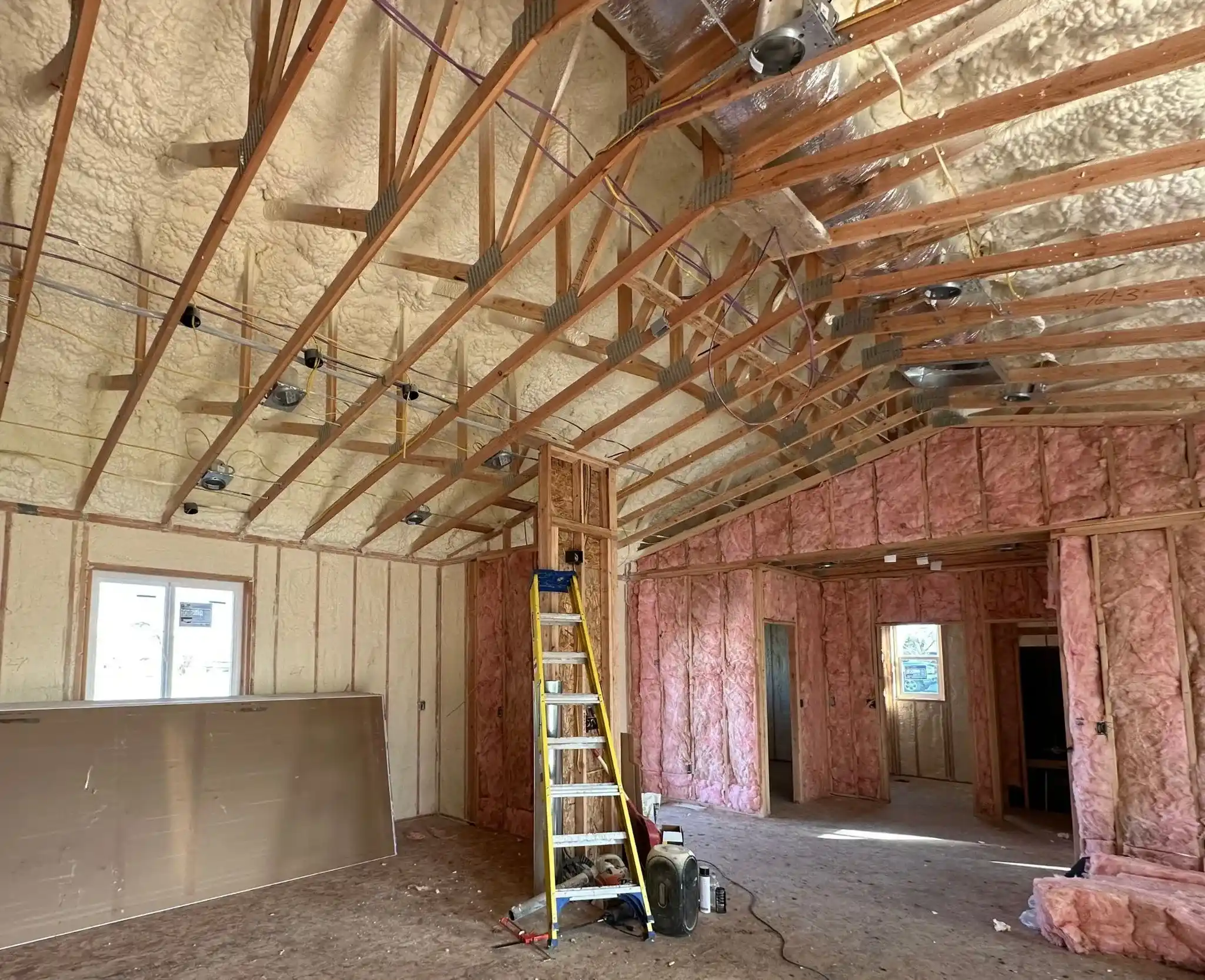
Air-tight insulation creates a continuous thermal barrier that prevents conditioned air from escaping and outdoor air from infiltrating your home. For Tooele homeowners, this translates to reduced energy bills, improved indoor comfort, and better protection against Utah’s extreme temperature variations that can swing from sub-zero winters to scorching summers exceeding 100°F.
Properly installed air-tight insulation systems eliminate thermal bridging and air leakage points that can account for 25-40% of total energy loss in residential buildings. Nevada Urethane’s experience with Tooele’s unique climate conditions demonstrates that homeowners typically see 15-30% reductions in heating and cooling costs within the first year of proper air-sealing installation.
Air leakage occurs through gaps, cracks, and penetrations in your home’s thermal envelope. Common problem areas include foundation walls, electrical outlets, recessed lighting fixtures, and attic access points. The Department of Energy reports that air leakage can waste 5-30% of a home’s energy consumption annually.
Tooele’s elevation of 4,300 feet creates additional challenges with temperature differentials and wind exposure that amplify air infiltration problems. Stack effect becomes particularly pronounced during winter months when warm indoor air rises and escapes through upper-level gaps, pulling cold outdoor air through lower-level openings.
Utah’s Great Basin climate subjects homes to dramatic temperature swings and low humidity levels. Winter temperatures often drop below 10°F while summer heat can exceed 95°F. These conditions stress building materials and create expansion-contraction cycles that can compromise air sealing over time.
Bonus Tip: Schedule air sealing work during shoulder seasons (spring or fall) when temperature differentials are moderate, allowing sealants and materials to cure properly without extreme thermal stress.
| Insulation Method | Air Sealing Capability | R-Value per Inch | Moisture Resistance | Longevity |
|---|---|---|---|---|
| Spray Foam (Closed-Cell) | Excellent | 6.0-7.0 | High | 30+ years |
| Spray Foam (Open-Cell) | Good | 3.5-4.0 | Moderate | 25+ years |
| Blown-In Cellulose | Poor (requires separate air sealing) | 3.6-3.8 | Low | 20-25 years |
| Fiberglass Batts | Poor (requires separate air sealing) | 3.1-3.4 | Low | 15-25 years |
| Rigid Foam Boards | Good (with proper sealing) | 4.0-6.5 | High | 25+ years |
According to the North American Insulation Manufacturers Association, properly installed spray foam insulation can reduce air infiltration by up to 90% compared to traditional insulation methods. This dramatic improvement stems from spray foam’s ability to expand and seal irregular spaces that other materials cannot address.
| Home Size (sq ft) | Annual Energy Savings | Heating Cost Reduction | Cooling Cost Reduction | Payback Period |
|---|---|---|---|---|
| 1,500-2,000 | $300-500 | 20-35% | 15-25% | 3-5 years |
| 2,000-2,500 | $450-750 | 25-40% | 20-30% | 3-4 years |
| 2,500-3,000 | $600-950 | 30-45% | 25-35% | 2-4 years |
| 3,000+ | $800+ | 35-50% | 30-40% | 2-3 years |
Lawrence Berkeley National Laboratory studies indicate that comprehensive air sealing combined with proper insulation can reduce total home energy consumption by 15-50%, with the highest savings occurring in homes with significant existing air leakage.
Evaluate your home’s current ventilation system before implementing comprehensive air sealing measures. Older homes often rely on natural air infiltration for ventilation, which can create indoor air quality issues when eliminated without proper mechanical ventilation installation.
Consider moisture management requirements specific to your home’s construction and local climate conditions. Tooele’s dry climate reduces condensation risks, but improperly sealed homes can still develop humidity problems in areas like basements and crawl spaces.
Assess existing HVAC system capacity and ductwork condition. Air-tight homes may require HVAC adjustments to maintain proper airflow and indoor air quality. Duct sealing should accompany whole-house air sealing for optimal results.
Bonus Tip: Conduct a blower door test before and after air sealing work to quantify improvements and identify remaining problem areas.
Nevada Urethane offers comprehensive air-tight insulation solutions designed for Tooele’s climate conditions:

Maintain your air-tight insulation system through regular inspections of sealed areas, particularly around settling-prone locations like foundation connections and roof penetrations. Schedule professional assessments every 5-7 years to address any degradation from building movement or material aging.
Monitor indoor humidity levels between 30-50% to prevent moisture-related problems while maintaining comfort. Install humidity controls if necessary, particularly in finished basements or areas with limited natural ventilation.
Consider future home modifications when planning air sealing work. Electrical, plumbing, or HVAC changes can compromise air barrier integrity if not properly addressed during installation or renovation projects.
Seal uncontrolled air leaks while maintaining controlled ventilation through proper mechanical systems. Focus on major leakage points first, including attic penetrations, basement rim joists, and around windows and doors.
Signs include uneven temperatures between rooms, drafts near windows and outlets, high energy bills relative to home size, and excessive dust accumulation. Professional energy audits can quantify air leakage rates.
Properly designed air-tight systems include vapor barriers and ventilation planning to prevent moisture issues. Problems typically arise from incomplete installations or inadequate mechanical ventilation.
Bonus Tip: Install programmable thermostats and monitor energy usage patterns after air sealing to maximize efficiency gains and identify any system adjustments needed.
Transform your Tooele home’s energy performance with professionally installed air-tight insulation systems. Nevada Urethane’s experience with local climate conditions ensures optimal material selection and installation techniques for long-term performance and energy savings.
For comprehensive air sealing solutions tailored to your home’s specific needs, contact Nevada Urethane at (775) 397-2820 or [email protected]. Professional assessment and installation ensure maximum energy efficiency and comfort improvements for your investment.
High-quality closed-cell spray foam maintains excellent air sealing performance for 30+ years when properly installed. Open-cell foam typically provides 25+ years of effective air barrier performance. Regular inspections help identify any areas requiring maintenance.
Properly designed air-tight homes include mechanical ventilation systems that provide controlled fresh air exchange while maintaining energy efficiency. Energy recovery ventilators can provide fresh air while minimizing energy loss.
Strategic combinations work well when properly designed. Spray foam air sealing combined with blown-in insulation provides excellent performance. Each material must be installed correctly to maintain the continuous air barrier.
Air-tight homes often require HVAC adjustments for optimal performance. Reduced heating and cooling loads may allow for smaller equipment sizing in future replacements. Ductwork sealing should accompany whole-house air sealing.
Minimal maintenance beyond periodic visual inspections of accessible sealed areas. Check around penetrations and connections annually. Professional assessments every 5-7 years help identify any areas requiring attention.